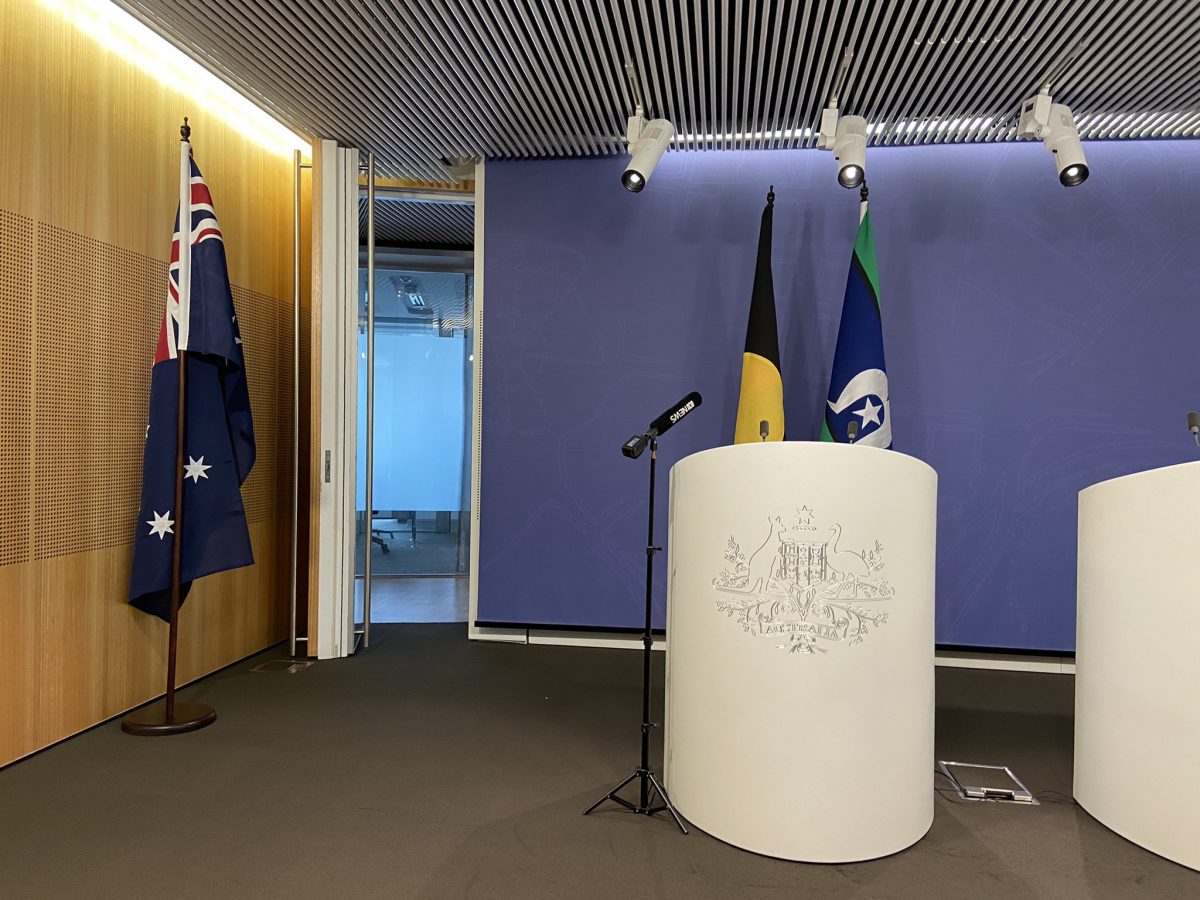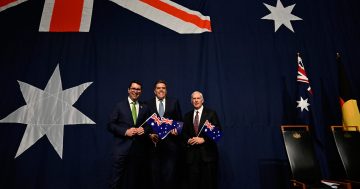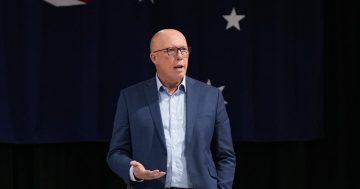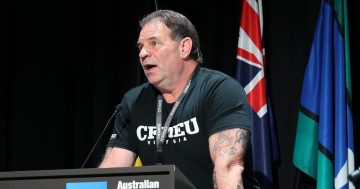
The scene of Adam Bandt’s press conference, with the relegated Australian flag. Photo: Twitter.
Year in Review: Region Media is revisiting some of the best Opinion articles of 2022. Here’s what got you talking, got you angry and got you thinking in 2022. Today, Ian Bushnell starts a conversation he says the nation needs to have.
Australians have never been a particularly fervent nation of flag wavers, being rightly sceptical of overt displays of patriotism.
That doesn’t mean that people not so enamoured of the current flag are any less loyal than those who drape themselves with it in public.
Greens MP Adam Bandt reignited the debate about whether the Australian flag, with its prominent Union Jack in the corner, reflects the nation we have become or respected the First Nations who fell under British dominion.
He is refusing to stand before it during press conferences, attracting derision from conservatives and warnings from the likes of the Prime Minister that it was a divisive act that did not serve a nation in need of coming together.
Even First Nation’s representatives are undecided about his stand.
It’s also probably seen as a distraction from the considerable number of thorny issues the government has to contend with, even though it now has an Assistant Minister for the Republic.
Labor Prime Minister Paul Keating famously folded the flag so it would not show the Union Jack.
Later he said: “I do not believe that the symbols and the expression of the full sovereignty of Australian nationhood can ever be complete while we have a flag with the flag of another country on the corner of it.”
It was Liberal PM John Howard who raised the flag to a new status. His government passed legislation in 1998 to ensure that it could only be changed if the electorate approved an alternative design and that the existing flag should always be one of the choices offered at a national vote.
Calling it Australia’s oldest national symbol, Howard also promoted the Anzac myth more than any other politician. He turned the annual commemoration and Australia Day into outpourings of nationalistic fervour that required plenty of flags.
It is often argued that Australians fought under the flag, the Blue Ensign created after Federation, but in truth, it was mostly the Union Jack or, at sea, the Australian Red Ensign. In fact, it wasn’t until 1954 that Australia adopted the Blue Ensign as the national flag.
Howard understood the power of symbols and while he said the legislation would mean the flag did not belong to any one political party, he knew in the lead-up to the 1999 referendum on the Republic that it would continue to tie Australia to Britain and hopefully the conservative values he espoused.
The result is that there are now plenty of people who will appropriate the flag for their causes to link them to what they see as the national interest.
From Cronulla to the Canberra convoys, the flag has been a prominent feature, and sometimes not used honourably.
It also means that the flag has become more accepted and enmeshed in the national identity, and so much harder to change.
Mr Bandt can be accused of grandstanding, maybe fuelled by his party’s relative success at the recent election, but his action does raise some questions that bear some thinking about.
Why do politicians have to stand before a clutch of flags to tell us things? Does it make them and what they say any more important?
Can a flag that includes the Union Jack, itself a symbol under question in non-English areas of the UK, be a symbol of unity in such a multicultural country?
Then there is the continuing confusion overseas when the Australian and New Zealand flags are flown, not to mention the bunch of other Commonwealth countries that also use a Union Jack in their designs.
Of all the issues confronting the country, the flag is not high on the list.
But it would be useful if people put aside knee-jerk reactions, didn’t accept the mythmaking around the flag and thought about whether it really did represent all Australians.
Whatever design it may be, the less nationalistic waving and draping, the better.




















